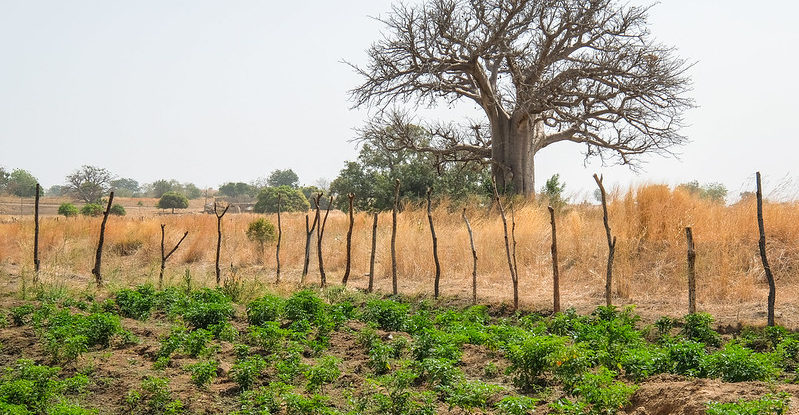
Conservation and development initiatives – even when well-funded and carefully executed – may not succeed if essential, yet often overlooked ingredients are missing, according to recent findings from a study of Community Based Natural Resource Management (CBNRM) initiatives in Ghana and Zambia.
However, potential solutions can be recognized through the implementation of integrated landscape approaches (ILAs).
First, however, a significant paradigm shift is necessary, a move away from short-term projects driven by externally defined objectives, to instead favor longterm processes embedded in local institutions.
Additionally, a clearly defined exit strategy that prepares local institutions and communities to be self-sufficient is also needed. Community ownership in project design and implementation is non-negotiable and should go beyond consultation and meeting attendance to active participation in decision-making, partnership, and delegated power.
Short-term support for long-term challenges
As part of the COLANDS (Collaborating to Operationalize Landscape Approaches for Nature, Development and Sustainability) initiative, we reviewed past and present CBNRM initiatives in Ghana and Zambia to understand the potential opportunities and challenges in scaling up collaborative natural resource management to the landscape scale.
The CBNRM approach aims to empower communities to sustainably manage biodiversity through the decentralization of management responsibilities, participation, and benefit-sharing.
We recognize that short-term project funding cycles severely challenge work on governance, capacity building, and community ownership, which are all necessary for sustaining CBNRM initiatives. Take Ghana, for example.
There, Community Resource Management Areas (CREMAs) are the dominant CBNRM strategy and this should be a positive factor because a CREMA consists of several communities that come together with common management goals. Furthermore, the establishment of a CREMA devolves management of natural resources to the participating communities.
However, donor and implementing agencies of CREMAs claim that robust democratic engagement of multiple user groups and traditional authorities are complex, resource-intensive and difficult to achieve with strict project timelines and objectives. Overcoming these challenges will be an ongoing process of negotiation and capacity building among stakeholders, requiring time and resources.
Yet, it can be done. The Wechiau CREMA in North-Western Ghana illustrates the potential of CREMAs when these have long-term support. Through long-term (over 10 years) external technical, financial, and logistical support from the Nature Conservation Research Centre (NCRC), and the Calgary Zoo in Western Canada, the Wechiau CREMA delivered social and ecological benefits through the development of tourism infrastructure for the conservation of pygmy hippos.
Building on the strengths of CBNRM
Despite the fact that most CBNRM initiatives struggle with inconsistent funding and support, there are many positive traits in their design. CBNRM programs are required (in theory) to form committees composed of local representatives and leaders. This gives communities a platform to voice interests and concerns that may not have been heard otherwise. For example, in the CREMA program, two distinct committees are elected from the participating communities to provide daily operational management oversight and liaise with community members.
Another strength of CBNRM is it allows participating communities to decide on conservation and development priorities relevant to the local context, and tailor the initiative accordingly. As such, the primary rationale for establishing CREMAs differ across participating communities, from eco-tourism to sustainable production of traditional medicine and bushmeat, agroforestry to landscape restoration.
The evolution of CBNRM in Zambia led to the establishment of the Zambia CBNRM Forum (ZCBNRM Forum). This acts as a bridging organization, facilitating ongoing processes of negotiation, monitoring, and evaluation to prevent project collapse beyond the expiration of the project’s funding. A recent example of a Forum-supported initiative (with additional funding from the U.N. Development Programme small grants office) is the Indigenous and Local Community Conservation Territories and Areas (ICCAs) in Zambia. ICCAs are Indigenous-managed territories that conserve nature and livelihoods through traditional knowledge and practices. Supporting ICCAs strengthens Indigenous community institutions and sustains natural resources outside of formal protected areas.
Moving Forward
Learning from both the positive and negative experiences of CBNRM will undoubtedly help to move towards more integrated, inclusive, and sustainable landscape-scale governance.
ILAs are an opportunity in this regard, as these offer a participatory framework for long-term iterative collaboration between stakeholders to sustainably manage multi-functional landscapes. Stakeholders in these landscapes can come together to negotiate short, medium and long-term land use objectives and a pathway to get there. Further, they necessitate linkages beyond the community scale, which can help diversify support mechanisms.
ILAs have been promoted as a shift from project to process; however, reports of ILAs to date have found these initiatives to be inhibited by short-term funding cycles. If ILAs are to reach their full potential, donor agencies should consider longer-term funding periods. Implementing agencies and/or bridging organizations should focus on embedding ILAs into pre-existing local institutions and funneling resources towards those that require more emphasis on capacity.
In addition, government support via policies that encourage private sector engagement in ILA/CBNRM initiatives would be beneficial. Collaborating with the private sector is a necessary opportunity for capacity building and diversifying sources of support. However, such collaborative processes require careful planning and facilitation to ensure that representation is indeed inclusive and equitable.
This research forms part of the CGIAR Research Program on Forests, Trees and Agroforestry, which was supported by CGIAR Fund Donors. COLANDS is part of the International Climate Initiative (IKI) and is funded by the German Federal Ministry for the Environment, Nature Conservation and Nuclear Safety (BMU).
Ph.D. research is hosted at the Faculty of Forestry of the University of British Columbia and the Institute for Social Science Research (AISSR) of the University of Amsterdam.
We want you to share Forests News content, which is licensed under Creative Commons Attribution-NonCommercial-ShareAlike 4.0 International (CC BY-NC-SA 4.0). This means you are free to redistribute our material for non-commercial purposes. All we ask is that you give Forests News appropriate credit and link to the original Forests News content, indicate if changes were made, and distribute your contributions under the same Creative Commons license. You must notify Forests News if you repost, reprint or reuse our materials by contacting forestsnews@cifor-icraf.org.